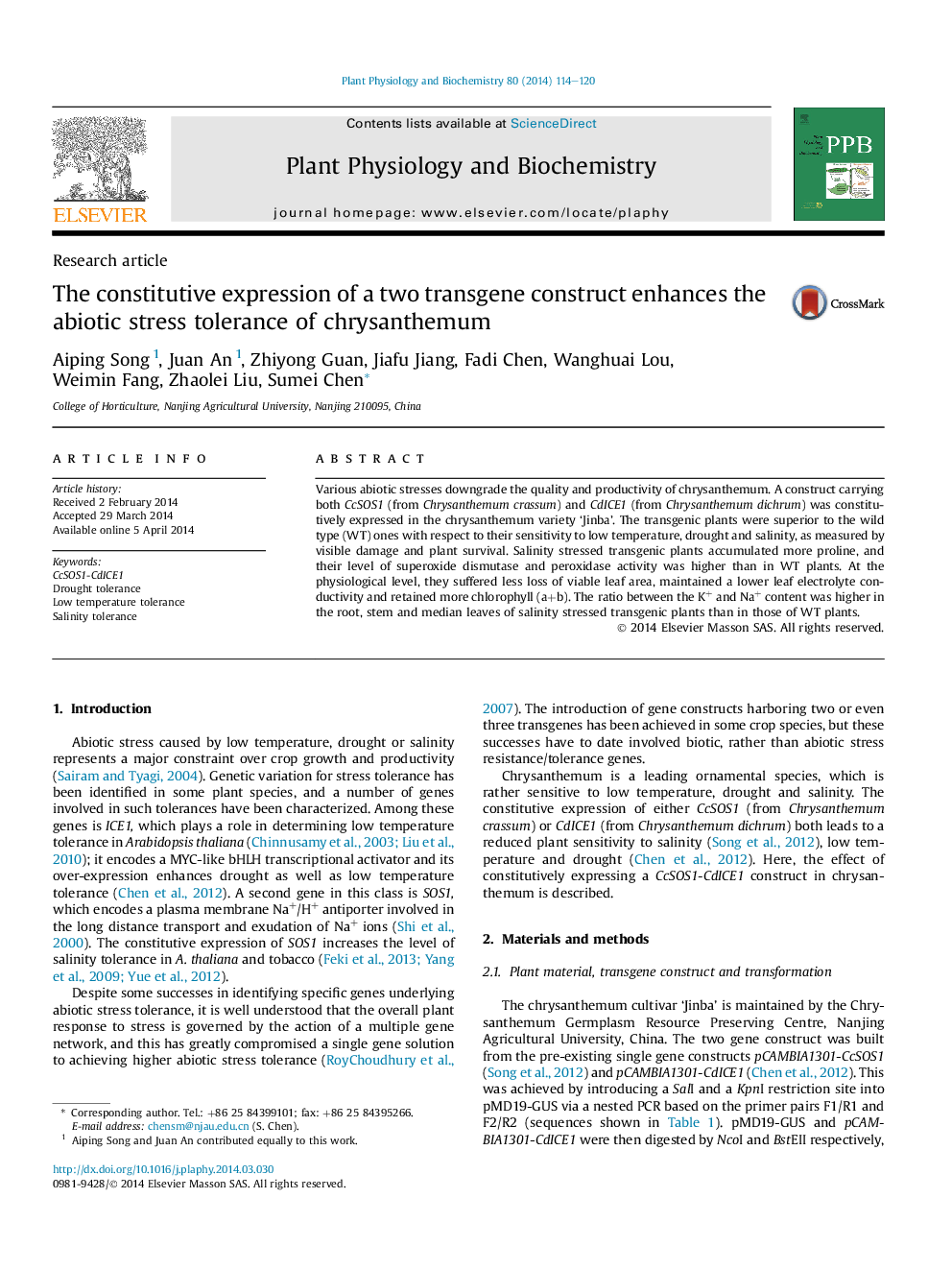| Article ID | Journal | Published Year | Pages | File Type |
|---|---|---|---|---|
| 2014819 | Plant Physiology and Biochemistry | 2014 | 7 Pages |
Abstract
Various abiotic stresses downgrade the quality and productivity of chrysanthemum. A construct carrying both CcSOS1 (from Chrysanthemum crassum) and CdICE1 (from Chrysanthemum dichrum) was constitutively expressed in the chrysanthemum variety 'Jinba'. The transgenic plants were superior to the wild type (WT) ones with respect to their sensitivity to low temperature, drought and salinity, as measured by visible damage and plant survival. Salinity stressed transgenic plants accumulated more proline, and their level of superoxide dismutase and peroxidase activity was higher than in WT plants. At the physiological level, they suffered less loss of viable leaf area, maintained a lower leaf electrolyte conductivity and retained more chlorophyll (a+b). The ratio between the K+ and Na+ content was higher in the root, stem and median leaves of salinity stressed transgenic plants than in those of WT plants.
Keywords
Related Topics
Life Sciences
Agricultural and Biological Sciences
Plant Science
Authors
Aiping Song, Juan An, Zhiyong Guan, Jiafu Jiang, Fadi Chen, Wanghuai Lou, Weimin Fang, Zhaolei Liu, Sumei Chen,
